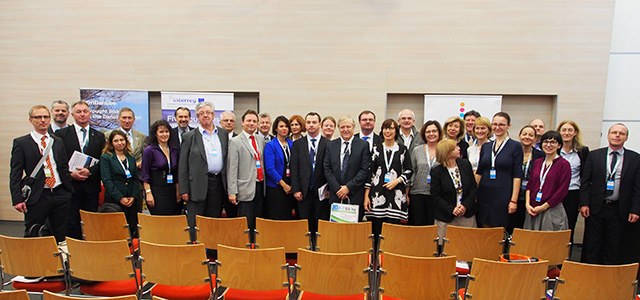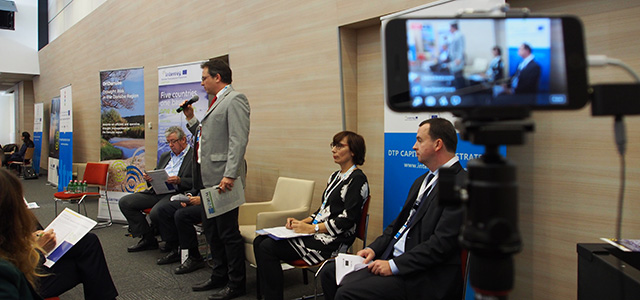Attracting more than 1200 participants, the conference aimed to find ways to better integrate the non-EU countries participating in the EU Strategy for the Danube Region (EUSDR), so that they have greater access to the Strategy’s funding opportunities and benefit further from its implementation.
Better water management for more connected and energy efficient Danube region
In a parallel set of workshops, 12 working groups were organised according to the 12 Thematic Poles identified in the Danube Transnational Programme's Capitalisation Strategy. The goal was to strengthen the networking capacity of the involved projects/stakeholders and to find potentials for synergy among stakeholders sharing the same interests. This session provided a unique opportunity for the Thematic Poles to get to know relevant projects, programmes, initiatives and stakeholders that could be involved in their capitalisation activities in the future.
The Capitalisation event "Better water management for more connected and energy efficient Danube region" provided a platform for four projects which focus on specific aspect of water management: DriDanube, JOINTISZA, Danube Sediment and CAMARO-D.
Identified synergies and areas of cooperation
The face-to-face discussions reinforced the already existing linkages and cooperation initiatives among the projects. In line with JOINTISZA project activities areas for cooperation have been identified with all projects, e.g. water and land use issues (within CAMARO-D), the first “Danube Sediment Management Guidance” (within Danube Sediment project) was identified to serve as an inspiration to relevant sections of the Joint Tisza Survey Manual. Synergies were found between DriDanube and JOINTISZA in the area of drought management; within the JOINTISZA project by investigating climate change-induced water quantity-related issues in the Middle Tisza and in DriDanube by developing joint Strategy for efficient and operational drought management in the region which is using similar approach of involving stakeholders as it is described in Shared Vision Planning (from JOINTISZA project). The steps for better drought management described in DriDanube Strategy will help JOINTISZA to better address drought in Tisza RBMP.
“The capitalisation workshop was a great opportunity for us to discuss the possibilities for cooperation among the projects working on similar topics and to share the knowledge and lessons learned. Not only do we have mutual synergies, but also partners and stakeholders, which makes joining forces very desirable for the future of the Danube region“, said Jana Pangracova, communication manager of DriDanube project for Global Water Partnership Central and Eastern Europe.
The role of GWP CEE in addressing water management challenges in the region
GWP CEE is involved in three projects from the water management group (DriDanube, JOINTISZA, Danube Sediment) which gives us additional validation as an important regional player in addressing water management challenges in the region. In DriDanube, GWP CEE is responsible for communication, providing linkages between project outputs and stakeholders and for assuring the sustainability of the project. DriDanube is also one of the projects which helps to implement IDMP CEE in Central and Eastern Europe. In JOINTISZA, GWP CEE is responsible for consolidating the project outputs into the updated Tisza RBMP and for developing a pilot activity on drought management (with linkages to DriDanube) in the light of climate changes. In Danube Sediment GWP CEE has the role of Associated Strategic Partner and as such will contribute to the sustainability of the project outputs.
The session “Better water management for more connected and energy efficient Danube region" was streamed live on Facebook and can be viewed here.
The Joint Statement of the Ministers responsible for the implementation of the EU Strategy for the Danube Region and the photos taken during the Forum are now available on the 6th Annual Forum's website.

